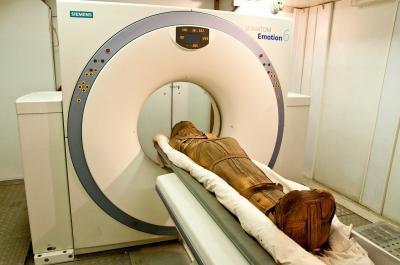
Lady Rai, nursemaid to Queen Nefertari of Egypt, died in 1530 BC, somewhere between the age of 30 and 40 years. Her mummy is preserved in the Egyptian National museum of Antiquities in Cairo.
A CT scan of her thoracic aorta revealed calcium, representing aortic atherosclerosis, reported by Allam et al (including my friend from The Wisconsin Heart Hospital, Dr. Sam Wann, who provided me a blow-by-blow tale of this really fascinating project). Ladi Rai and 14 other Egyptian mummies were found to have vascular calcification of a total of 22 mummies scanned. (The hearts of the mummies were too degenerated to make out any coronary calcium.)
But why would people of that age have developed atherosclerosis?
The authors of the study comment that "Our findings that atherosclerosis was not infrequent among middle-aged and older ancient Egyptians of high social status challenges the view that it is a disease of modern humans. . . Although ancient Egyptians did not smoke tobacco or eat processed food or presumably lead sedentary lives, they were not hunter-gatherers. [Emphasis mine.] Agriculture was well established in ancient Egypt and meat consumption appers to have been common among those of high social status."
Fascinating. But I don't think that I'd blame meat consumption. Egyptians were also known to have cultivated grains, including wheat, and frequently consumed such sweet delicacies as dates and figs. Egyptians were also apparently beer drinkers. Unfortunately, no beer steins were seen in any of the scans.